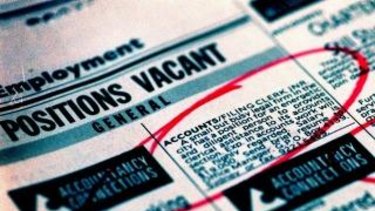In less than five weeks’ time, the coronavirus supplement for those on the $565.70 a fortnight JobSeeker allowance will be sliced to $150 a fortnight from $250 before ending completely in March. The same cut faces those on the $503.20 a fortnight Youth Allowance.
The post-Christmas cut will reduce incomes for hundreds of thousands of people and many communities across the state.
The worst affected will be around Dandenong where almost 10,600 people or almost 3 per cent of the State’s JobSeeker recipients live.
In Melbourne’s west, another 10,452 around the Broadmeadows area are on JobSeeker, there are another 9070 in the area stretching from Melton to Bacchus Marsh while there are 7151 across the Reservoir-Thomastown region.
The Frankston area is also facing an income hit with almost 9000 people on JobSeeker.
Outside of Melbourne, a string of regional centres have large number numbers of residents on unemployment support.
There has been no change in the number of people on support in Ballarat, Bendigo and Shepparton over the past month, with numbers remaining elevated since the easing of coronavirus restrictions across Victoria.
Research by economist Jeff Borland shows even a $125 a week increase in the JobSeeker payment won’t stop people looking for work.Credit:Jesse Marlow
On the NSW-Victoria border, the number of JobSeeker recipients in Albury-Wodonga fell by 4 per cent between mid-October and mid-November but there are still almost 6000 residents on income support, a sign of the economic damage caused by the border’s closure.
One of the nation’s most respected labour market economists, Melbourne University’s Jeff Borland, has found a substantial increase in the JobSeeker payment would not stop an unemployed person looking for work and could even make it easier for them to get the right job.
Dr Borland, whose work on job subsidies influenced the Morrison government’s design of its JobMaker program, compared the current national minimum wage of $753.80 a week with a $125 a week increase in JobSeeker.
Such a large increase in JobSeeker would still leave a person receiving 54 per cent of the minimum wage, leaving a huge financial incentive to find work. Dr Borland said 99 per cent of all full-time workers would still be earning more than a person on the higher JobSeeker payment.
“Should the JobSeeker payment be increased by $125 per week, recipients would retain a significant financial incentive to work extra days,” he found.
“It would also provide greater capacity to pay for job search‐related costs such as paying for transport to or clothing for interviews.”
There is concern within some parts of the Coalition about lifting JobSeeker, with some citing complaints from individual businesses of difficulty finding staff because of the high level of the coronavirus supplement.
But Dr Borland examined the monthly flows between the unemployed and those in work in data collated by the Australian Bureau of Statistics.
He said as the economy has recovered over recent months, the proportion of unemployed people moving into work was actually higher than between 2017 and 2019.

There are fewer entry-level jobs in NSW and Victoria.
“Hence, there is no evidence from labour market flows data that the COVID‐19 supplement has decreased the speed of movement from unemployment to work,” he said.
Separate research by online employment and professional services company LinkedIn shows that hiring remained flat across the country through October, down 6 per cent on the same time last year.
While NSW has the most jobs available of any state, there are more entry-level opportunities for people in Queensland, Western Australia and Tasmania.
The ACT has the lowest rate of entry-level jobs, followed by Victoria and NSW.
Loading
LinkedIn found people in the travel and recreation areas, which have suffered some of the biggest increases in unemployment during the pandemic, are looking to shift into new areas. Education workers are also moving into high demand areas such as healthcare.
Asia-Pacific lead economist for LinkedIn, Pei Ying Chua, said people with digital skills had more job opportunities before the pandemic and also in its wake.
“Digital skills can be gained by upskilling through online learning and can help job seekers pivot quickly and find new opportunities,” she said.
Shane is a senior economics correspondent for The Age and The Sydney Morning Herald.
Most Viewed in Politics
Loading







